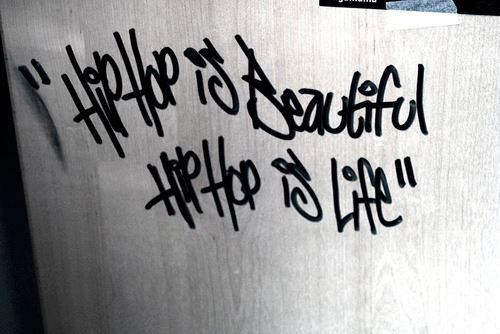Last week, after reading an article, (Shulman, L., et al, 2006), that thoroughly described the differences between the PhD and the EdD, I was really affirmed in my choice of ASU’s EdD program. The underlying concept of participatory action research of being a line of inquiry that rises out of the need of the local community is something that personally speaks to my personal and professional desires. I joined and continue to work in the field of education because I want to be a force of positive impact that helps those who live in the community I serve.
As we were grappling with elements of scholar and community identities last week, I’ve really begun to consider various aspects of research in general. Who is my community? Am I an insider? Outsider? Or some odd hybrid? Who ultimately is the beneficiary of the research? How do I ensure that they do benefit from the research? If I’m not a “part” of the community, can I even accurately identify what problems exist in the community?
I feel like these questions were not necessarily answered but enhanced from some of this weeks readings. A few texts in particular grabbed my attention and caused me to critically reconsider the above questions.
The first article that really made me reflect on the previous questions was Participatory Action Research and City Youth: Methodological Insights from the Council of Youth Research (Bautista, Bertrand, Morrell, Scorza, & Matthews, 2013). This article followed a project of the Council of Youth Research in Los Angeles as they taught high school youth how to do research and then supported them as they altered some traditional tools and practices to fit their needs. The students conducted various branches of research around schooling in their local community and many of the action research participants had personal connections to findings, experiences and systems it illuminated. I think I particularly connected to this article because it seemed that these students immediately benefited from the process and findings of the research. The students walked away from the experience being more informed advocates for equitable educational opportunities in LA.
Another set of text that confounded the questions that I’ve been grappling with, comes from the book Handbook of critical and indigenous methodologies (Denzin, Lincoln & Smith, 2008). A major component of the text is to analyze the methodologies and practices of traditional research and eradicate practices that reinforce colonization practices. A means of doing that, is to truly allow indigenous cultures and communities create their own research agendas, identify their own problems and conduct the research in ways that uphold their values and practices. This speaks to at least two of my main concerns. Research that is conducted in this manner truly benefits the community because it rises out of a need they’ve established. It also addresses the concept of whether or not an outsider of the community can accurately identify a problem. I think this text has caused me to believe that yes, an outsider might be able to identify elements of a problem that plagues the community but they may not ever necessarily identify or establish the importance, ramifications or depth of that problem themselves. I think the text establishes ways in which “outsiders” can assist communities in research but it really is described as completely altruistic and at the mercy of the community.
One last text that I was particularly drawn to was an article entitled, ‘Keeping Up the Good Fight’: the said and unsaid in Flores v. Arizona’, (Thomas, Risri Aletheiani, Carlson, & Ewbank, 2014). This particular article was crafted and organized very well and took a very interesting view and research stance on the Flores v. Arizona case and its implications for English Language Learning students in Arizona. I think one thing that immediately caught my attention and was present throughout the article, was the very objective and distant feel of the text. I think the authors did a profound job of connecting novel concepts to the plight of ELL students and Arizonans as well as crafting very poignant images that help illustrate that plight even more. However, what I didn’t get from this article that I felt from some of the others is a sense of personal connection. I understand that writing articles in a small group may drown out a strong, individual voice and even the article that this text was written for may demand very removed, distanced writing but I couldn’t help feel that this article was written in a fashion of an outsider looking in.
That may very well not be the case, but upon reflecting on the idea of participatory action research and the role that we as community members have in serving the needs of that community, I can’t help be believe that my research should be something that I’m not only passionate about but personally connected to. I hope to see that my writing reflects that element of community member fervor and that it ultimately benefits my community.
Bautista, M. A., Bertrand, M., Morrell, E., Scorza, D., & Matthews, C. (2013). Participatory Action Research and City Youth: Methodological Insights from the Council of Youth Research. Teachers College Record, 115(10).
Denzin, N. K., Lincoln, Y. S., & Smith, L. T. (2008, May 7). Handbook of critical and indigenous methodologies (N. K. Denzin, Y. S. Lincoln, & L. T. Smith). Sage.
Shulman, L. S., Golde, C. M., Bueschel, A. C., & Garabedian, K. J. (2006). Reclaiming education’s doctorates: A critique and a proposal. Educational Researcher, 35(3), 25-32.
Thomas, M. H., Risri Aletheiani, D., Carlson, D. L., & Ewbank, A. D. (2014). ‘Keeping Up the Good Fight’: the said and unsaid in Flores v. Arizona. Policy Futures in Education, 12(2), 242-261.
